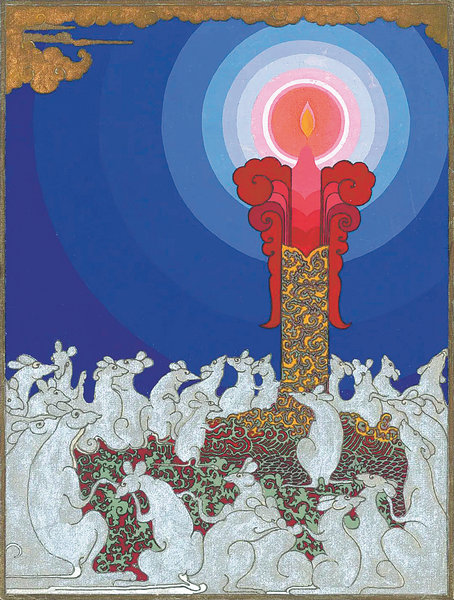

The absorption of all these elements of art and design ushered Jiang into the next stage — inarguably the most accomplished — of his art and career, modern ink figure painting through which he echoed his love for people.
The outbreak of the War of Resistance Against Japanese Aggression (1931-45) upended Jiang's life.
He lost jobs and moved frequently to escape the fighting.
He gradually focused on ink figure painting, and with compassion and benevolence, he depicted the lives of those suffering in the chaos, such as mothers begging for food and child vendors on the streets.
One work from this time, which in following years has been considered an iconic piece, is Liu Min Tu (Portrait of Refugees), made in 1943 and styled after the horizontal scroll of Chinese painting. It was done on a 27-meter-long and 2-meter-high paper scroll and shows more than 100 figures — men and women, the young and the old, parents and children — who fell victim to the ravages of war.
The piece was, however, torn into two pieces and only the first 12-meter part of it survives. In 1998, it was donated by Jiang's family to the National Art Museum of China.
An animated version of this piece, together with a draft of it, is on show at the Taikang exhibition.
Jiang once said of the painting: "Only did the underprivileged ones in this world understand what I painted. The ones I felt pity for were those dying of starvation on the roadside."
He also made works to inspire hope of triumph and peace. An example at the exhibition is New Year Wishes, a work from 1940 in which he portrayed a young woman in a red cheongsam dress, delivering the solemnity of cultural traditions, a festive mood and the vigor of youth.